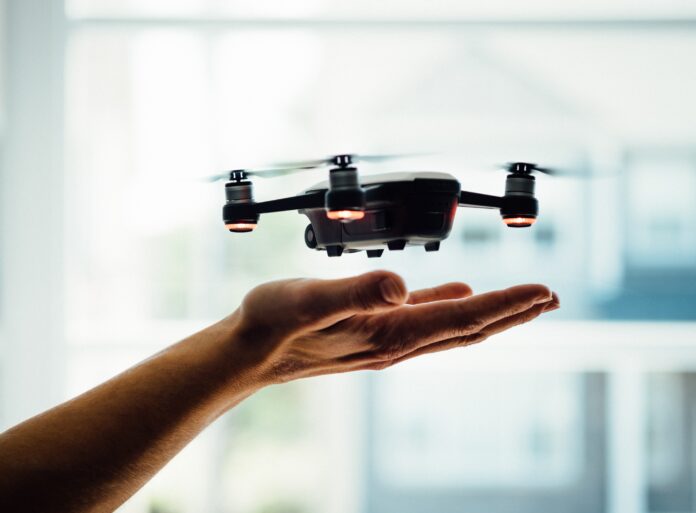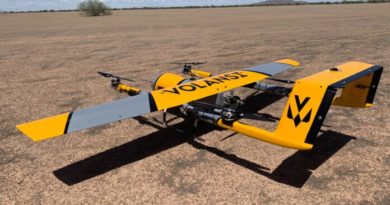6 Ways in Which Teachers Are Using Drones in the Classroom
Guest post by Kristin Savage
Educational methods are constantly changing due to technological advances. You must know all about e-learning and possibly something about using AI (artificial intelligence) in learning. But did you know that drones are being used in education as well?
Teachers can help with growing students’ passion for technology through interactive learning tools such as drones. Rather than using traditional, monotonous learning methods, drones allow teachers to evoke students’ curiosity.
By welcoming drones in the classroom, teachers have a new way of making learning more fun and interactive for children. This new learning tool can help the students to absorb the knowledge much faster. Let’s see in which ways teachers are using drones to improve the learning environment in the classroom.
1. Developing Motor Skills and Hand-Eye Coordination
Working on students’ motor skills and hand-eye coordination is very important, especially for younger students. Why? Because those skills are directly correlated to balance, sense of direction, writing, crafts, and many other skills.
Teachers can use drones to make practicing motor skills and hand-eye coordination more entertaining and diversified.
When students navigate drones from one place to another, they have to watch out for visual cues, invest a lot of focus, and control the drone’s direction. Medium‘s article agrees with this as they shared that “drones can help with the development of hand-eye coordination, depth perception, and fine motor skills.”
2. Practical Math Assignments
Many students find math to be one of the most challenging subjects in school. Teachers can change their aversion towards math with the use of drones.
“Drones can show students how math is everywhere around us. When you present the complexity of mathematic through engaging real-life examples, it will be easier for students to understand it,” says Jeffrey Scholl, a math teacher and contributor writer at GrabMyEssay.
For example, the Thai-Chinese International School outside Bangkok (Thailand) used a drone to make math more fun for students. Students had an assignment to observe the drone and to draw its path on a time and distance graph.
3. Teaching Coding
Coding is one of the most popular jobs in the world right now, which is why more students navigate towards that career. Learning how to code can be less intimidating if students use drones for a hands-on learning experience.
O’Gorman High School is one of the schools that use drones in an introductory coding class in computer programming. Their students learn the Python programming language first, and then drones come in the picture. Students get to program drones to fly around the school’s gymnasium in the course’s final week
“It’s a great learning experience. They can see the cause and effect of their programming. They troubleshoot and figure out why it isn’t working. Then they fix the code,” says Tara Johanneson, a computer science teacher and technology integrationist.
4. Writing Exercises
Nowadays, most cameramen use drones to capture beautiful scenery from the bird’s eye perspective. The teachers can also use the drone to photograph different places and use those photos for writing exercises.
The typical “here is the topic for your essay” assignment can be replaced with a more creative writing idea. Teachers can give students the images (or videos) taken by a drone and assign them to write an essay based on that.
“Encouraging students to create a story in their mind based on images is an exceptional way of letting their creativity out. The drone is great for taking photos since it gives you images that you wouldn’t normally take and provides the children with inspiring scenery,” shares Dorothy Harrison, a writer at ClassyEssay and TrustMyPaper.
5. Physical Activities
A study by the World Health Organization (WHO) found that 80% of children between the ages of 11 and 17 aren’t as physically active as they should be. The desire for sports and spending time outside has been replaced with video games and mobile phones.
“Drones can be an innovation in the classroom that will boost students’ curiosity for playing sports. Teachers can record students’ games and use the videos to discuss strategy,” shares Jarred McCaskey, a basketball coach and technical writer at TopEssayWriting.
With this innovative approach, children’s motivation for becoming a part of a sports team can increase.
Additionally, teachers can use drones to get students outside. For example, they can play hide and seek in a way that children hide, and teachers try to find them with a drone.
6. Laws of Physic
If teachers allow drones to enter the classroom, science can be such a cool subject. Teaching laws of physic won’t have to give teachers headaches as they watch their students yawn or stare at them blankly.
Let’s take Newton’s 3rd law as an example: An object at rest will remain at rest unless acted upon by an outside force.
To make the class about objects in motion more amusing, teachers can make the drone their assistant. They can place the drone above a soft surface and turn off the control. Students can see how if an outside force (using controllers to power the motor) is eliminated, the drone won’t move.
Not only will the drone help with teaching laws in physics, but it can also make science more diverting and understandable for students. Instead of memorizing the definitions by heart, students can learn thought applicable examples. Meaning, that what they learn will stay permanently in their memory associated with what teachers demonstrated with the drone.
Final Thoughts
Drones turn the traditional classroom into a fun learning environment. When teachers have the tools to engage students, they will increase the students’ interest in learning. Consequently, they’ll be able to motivate the students to achieve better academic results.
Using drones in education brings children closer to technology. Considering that technology is an eminent part of every aspect of our lives, the sooner the children adapt to it, the easier it will be for them in the future.
About the Author

Kristin Savage nourishes, sparks, and empowers using the magic of a word. Along with pursuing her degree in Creative Writing, Kristin was gaining experience in the publishing industry, with expertise in marketing strategy for publishers and authors. Besides working as a freelance writer at Subjecto, she also does some editing work at TrustMyEssay and BestEssaysEducation. In her free time, Kristin likes to travel and explore new countries around the world.



